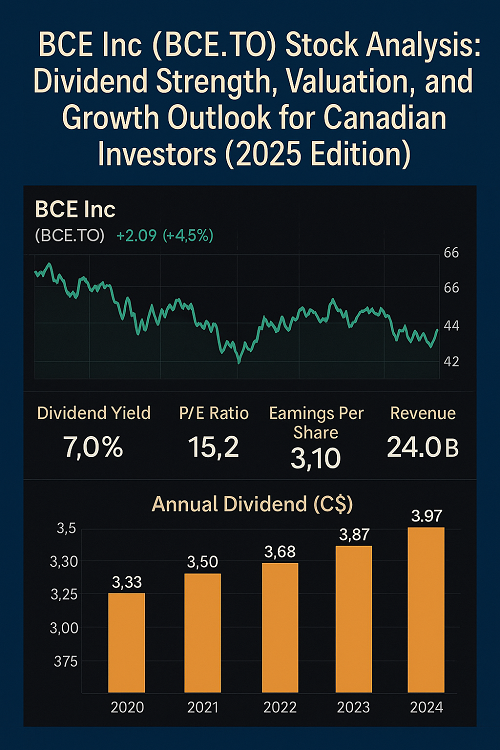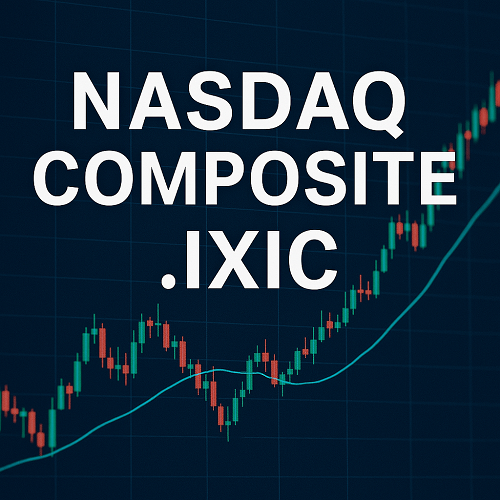Canadian Solar Inc. (NASDAQ: CSIQ) is a major global player in solar PV modules, energy storage solutions, and utility-scale solar project development. With mounting policy shifts, supply-chain pressures and a transition toward energy storage, the company stands at an inflection point. This article provides a detailed breakdown of CSIQ’s business model, financial performance, key opportunities and risks, valuation, and strategic outlook. It is designed to help serious investors and traders evaluate whether CSIQ fits into their portfolio for 2025 and beyond.
Company Overview & Business Model
Who is Canadian Solar?
Canadian Solar Inc. (“Canadian Solar” or “the Company”) was founded in 2001 in Canada and is now a global renewable energy company headquartered in Kitchener, Ontario.
The Company manufactures solar photovoltaic (PV) modules, provides energy-storage solutions, and develops, builds and operates utility-scale solar and storage projects.
Its ticker is CSIQ on the Nasdaq.
Business Segments
- Module manufacturing and supply – production of solar modules (mono- and multi-crystalline) for utility, commercial, and residential applications.
- Energy storage and battery solutions – a growing arm of the business, integrating battery systems with solar installations. For example, Q2 2025 results showed strong storage volume growth.
- Project development / IPP & EPC services – via its subsidiary Recurrent Energy, Canadian Solar builds and monetises solar + storage projects globally.
- Geographic diversification – The company serves markets in North America, Latin America, Europe, Asia-Pacific, Middle East & Africa. Its manufacturing footprint spans China, Vietnam, Indonesia, Thailand, etc.
Strategic Trends & Focus
- Vertical integration: From ingots/wafers to modules to system solutions.
- Technology leadership: advancing in TopCon cell technology, bifacial modules, higher-efficiency modules.
- Transition toward energy storage and bundled solutions (solar + storage) as renewables evolve.
- Volume management and margin focus amid pricing pressures. For example, in Q1 2025 management cited structural overcapacity, tariffs, policy uncertainty.
Recent Financial Performance & Metrics
Revenue Trend
- For the twelve months ending June 30 2025, Canadian Solar reported revenue of ~$5.92 billion, down ~9.1 % year-over-year.
- For full-year 2024, revenue was ~$5.99 billion, down ~21.3 % compared to 2023.
- Back in 2023, revenue was ~$7.61 billion.
Implication: The company is experiencing a revenue contraction as the solar supply-chain and end-market dynamics face headwinds.
Profitability & Margins
- In Q2 2025, shipments were 7.9 GW, gross margin ~29.8 % (better than guidance of 23-25 %) thanks to higher mix of North American module shipments and stronger storage volumes.
- Nevertheless net income remains under pressure: in Q1 2025, management reported a net loss (~US $34 m) despite revenue beat, due to lower storage contribution and margin pressure.
- Historical financials show widely fluctuating profitability: for example, over 2020-2023, net income has swung significantly.
Other Key Financials
- The cost of revenue and operating expenses indicate margin compression in lower volume years.
- Supply-chain exposure to tariffs, raw-material cost increases, and policy changes make future cash flows more uncertain.
- Storage segment is becoming a higher margin area—but it is still emerging and has project-timing risks.
Summary Table: Key Metrics
| Metric | Latest / TTM | Commentary |
|---|---|---|
| Revenue (TTM) | ~$5.92 billion | ~9.1 % decline YoY |
| Gross margin (Q2 2025) | ~29.8 % | Better than guidance, driven by storage & NA mix |
| Net income / loss | Loss reported in Q1 | Margin pressure remains |
| Shipments (Q2 2025) | ~7.9 GW modules | At high end of guidance |
| Backlog & pipeline | Storage pipeline ~91 GWh; backlog multi-billion USD | Growth opportunities but timing risk |
Industry & Competitive Landscape
Solar & Energy Storage Industry Context
- Global solar demand remains robust, driven by electricity‐demand growth, decarbonisation targets, and energy storage adoption. For example, Canadian Solar management noted that global electricity demand is “growing at its fastest pace in years” due to AI and other energy-intensive applications.
- At the same time, the industry faces structural overcapacity, downward pressure on module pricing, tariffs (especially U.S.–China trade), and escalating raw materials/wafer costs.
- Storage (battery + solar) is a high-growth segment, offering higher margins and differentiation—hence Canadian Solar emphasises e-STORAGE, residential and utility scale battery systems.
Competitive Positioning
- Canadian Solar competes with other module manufacturers (e.g., JinkoSolar Holding Co., Ltd., LONGi Green Energy Technology Co., Ltd., Trina Solar Limited) and project developers/integrators.
- Its vertical integration and global footprint give it advantages, yet currency risk, manufacturing cost pressures, and project execution risks remain.
- On storage, Canadian Solar must compete with both battery manufacturers (e.g., Tesla, Inc. with its Megapack, LG Energy Solution, etc.) and solar + storage integrators.
Key Industry Risks
- Policy/tariff risk: The company operates manufacturing in Asia and supplies globally; changes in U.S., EU, China policies may impact margins and shipments.
- Pricing and margin pressure: Oversupply of modules can drive down prices and hurt profitability.
- Project timing / execution risk: For the development/IPPs business, delays, cost overruns or weak offtake agreements can impair returns.
- Supply-chain and raw-material inflation: Costs of wafers, polysilicon, freight, logistics remain volatile.
- Currency, geopolitical, regulatory: Being global, Canadian Solar is exposed to FX, trade wars, and regulatory/regional risk.
SWOT Analysis
Strengths
- Strong global footprint and diversified manufacturing base.
- Leadership in solar module technology (TopCon, high-efficiency modules).
- Growing energy storage business with higher margin potential.
- Robust project pipeline and backlog in solar + storage.
Weaknesses
- Revenue decline in recent years – signaling cyclicality and margin stress.
- Exposure to commodity and manufacturing cost pressures.
- Large volume required to maintain economies of scale.
Opportunities
- Acceleration of storage adoption globally (residential, commercial & utility).
- Bundled solar + storage solutions for grid-edge, commercial/residential.
- Expansion into U.S. manufacturing and potential incentives under U.S. clean-energy policy.
- Monetisation of IPP assets, longer-term recurring revenue streams.
Threats
- Continued overcapacity in module manufacturing leading to pricing collapse.
- Trade/tariff escalations between major markets (U.S.-China, etc.).
- Loan / project risk in development business (construction delays, cost overruns).
- Technological disruption or cheaper alternatives emerging.
Valuation & What to Watch
Valuation Metrics
Given the recent revenue contraction and margin pressure, Canadian Solar’s valuation must be viewed with caution. While the company is trading at a low revenue multiple (P/S ~0.32 according to recent data) , the risk-adjusted growth outlook remains modest.
Important metrics to watch include: ship-ments (GW), module ASPs (average selling price), storage volume and margin, backlog / pipeline growth, gross margin trend, free cash flow, and project-sale monetisation.
What to Monitor Over the Next 12–24 Months
- Shipments and ASP trends – Any drop in ASPs will compress profitability further.
- Storage business ramp-up – Storage is the margin lever; tracking volume growth (GWh) and margin.
- Manufacturing cost – Polysilicon, wafers, logistics, energy costs in manufacturing centres.
- Policy/regulation changes – Especially U.S. solar tariffs, Inflation Reduction Act incentives, EU renewable subsidies.
- Project development monetisation – How many MW or GWh of solar + storage projects are completed/monetised, recurring revenue build-up.
- Balance sheet & cash flow – Since renewable project business can be capital-intensive, free cash flow and debt structure are key.
Risk‐Adjusted Outlook & Investment Thesis
Bull Case
If Canadian Solar can pivot successfully towards higher-margin storage and bundled solutions, and if global solar demand rebounds (especially in U.S./Europe) with favourable policy tailwinds, the company could see margin expansion and revenue growth. This would support a multiple expansion from the low base.
Base Case
Given current challenges (oversupply/pricing pressure), expect flat to modest revenue growth over the next 12 – 24 months, with profitability recovering slowly. Storage may grow, but module segment may continue to face pressure.
Bear Case
If module pricing collapses further, tariffs worsen, and storage ramp delays occur, then Canadian Solar could face further revenue declines and compressed margins – risking negative free cash flow and value erosion.
Trading & Timing Considerations for CSIQ
- For traders, movement in CSIQ will likely follow: Q2/Q3 shipment results, storage volume disclosures, ASP/margin updates, and macro-policy developments (tax incentives, tariffs).
- Watch for earnings surprises: For example Q1 2025 revenue beat but still a net loss.
- Technical factors: CSIQ’s share price may respond quickly to storage business developments or module pricing announcements.
- Risk-reward: With valuation already low, upside exists if growth can pick up – but downside remains significant given structural risks.
- For long-term investors: A multi-year horizon is required if holding CSIQ given cyclical nature of solar manufacturing and project development.
Key Takeaways & Conclusion
- Canadian Solar is a well-positioned company in the renewables space with diversified business lines (modules, storage, project development).
- However, it faces a challenging environment: revenue decline, margin pressure, and many moving parts.
- The growth in storage and bundling gives hope for a turnaround, but it is not without risk.
- Investors and traders should closely monitor shipment volume, ASPs, margin trends, storage growth, and policy/regulation developments.
- Valuation is attractive at a glance, but the discount is driven by risk—only if Canadian Solar executes and the macro environment improves will the value unlock.
- Bottom line: CSIQ is a speculative but potentially rewarding player in the solar + storage transition—but treat it as one piece of a diversified portfolio, and keep tight risk controls.
Final Word
If you’re considering buying CSIQ, ask yourself: “Is Canadian Solar positioned better than its peers to benefit from the shift to storage and clean-energy incentives? And can it navigate the pricing pressures in the module business until the storage segment scales meaningfully?”
If the answer is yes, then the stock may offer compelling value. If the answer is no, then the risks may outweigh the upside.





 XAUT-USD
XAUT-USD  AMD
AMD  MARA
MARA  SHOP
SHOP  BULL
BULL  CL=F
CL=F